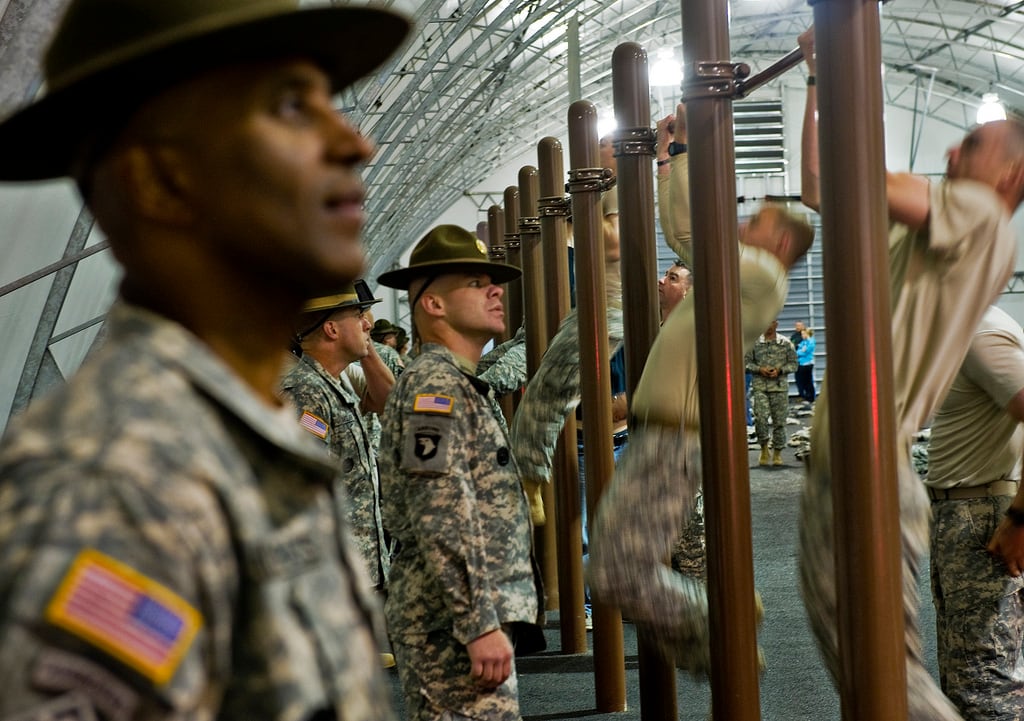Drill sergeants cut an intimidating figure at basic training, and the job comes with perks like a badge, special pay and a distinctive campaign hat.
But for platoon sergeants at advanced individual training, there's none of that, and it has resulted both in disillusionment for AIT staff and a lack of discipline among trainees, according to Army officials.
"How does an individual control a crowd of 120 if you are not vertically gifted and taller than everybody?" Command Sgt. Maj. Michael Gragg, the senior enlisted soldier at the Center for Initial Military Training, said Thursday in a virtual town hall with soldiers. "They can't see you. There's no self-discipline."
So the Army is working on a plan to bring drill sergeants back to AIT and level the playing field both for the cadre and the trainees.
The move would be a huge reversal for the Army.
The Army in 2007 replaced drill sergeants with AIT platoon sergeants as a way to recognize a young soldier's transition from "less total control and a little bit more of recognizing the role of the noncommissioned officer," Command Sgt. Maj. David Davenport, the senior enlisted adviser for Training and Doctrine Command, said last year when the Army first publicly floated the idea of returning drill sergeants to AIT.
The initial goal for putting drill sergeants back in AIT — drill sergeants already run One Station Unit Training, which is offered for military occupational specialties such as infantry and combines basic training and AIT — was fiscal year 2019. But leaders have pushed the date back a year because of budget issues.
By October 2019, Gragg said, he hopes to have drill sergeants leading AIT platoons.
"Often, individuals have no desire to come out and do it because there’s nothing in it for them," he said about AIT platoon sergeant assignments.
Though serving as an AIT platoon sergeant is considered a broadening assignment that looks good to a promotion board — and between 50 percent and 70 percent of AIT platoon sergeants are selected for promotion — Gragg said the distinction is a problem.
"Quite honestly, we have put them in the middle," he added. "You know, the drill sergeant gets a badge and some special pay. The instructor can earn a badge, and I can’t do anything for my AIT platoon sergeant."
Beyond the incentives for the drill sergeants themselves, there's an added discipline benefit for the trainees. After basic, discipline is known to lag as soldiers transfer to a new platoon without the fearsome supervision of a drill sergeant.
"We know that the force would like them there, we know that there’s a deficiency in warrior tasks and battle drills in the force," Gragg said. "We know there’s a decrease in discipline."
As it is now, AIT platoon sergeants look just like their soldiers, with maybe a three-meter sphere of influence, he added.
"If I put distinctive head gear on you, that sphere of influence is increased to 30 meters around you," he said.
And hopefully, that presence will encourage soldiers to self-police and carry those habits through their careers, he said.
Meghann Myers is the Pentagon bureau chief at Military Times. She covers operations, policy, personnel, leadership and other issues affecting service members.




